
How to Use Adjustable Voltage Output Buck Converter Multi-Channel Switching Power Supply Module: Examples, Pinouts, and Specs
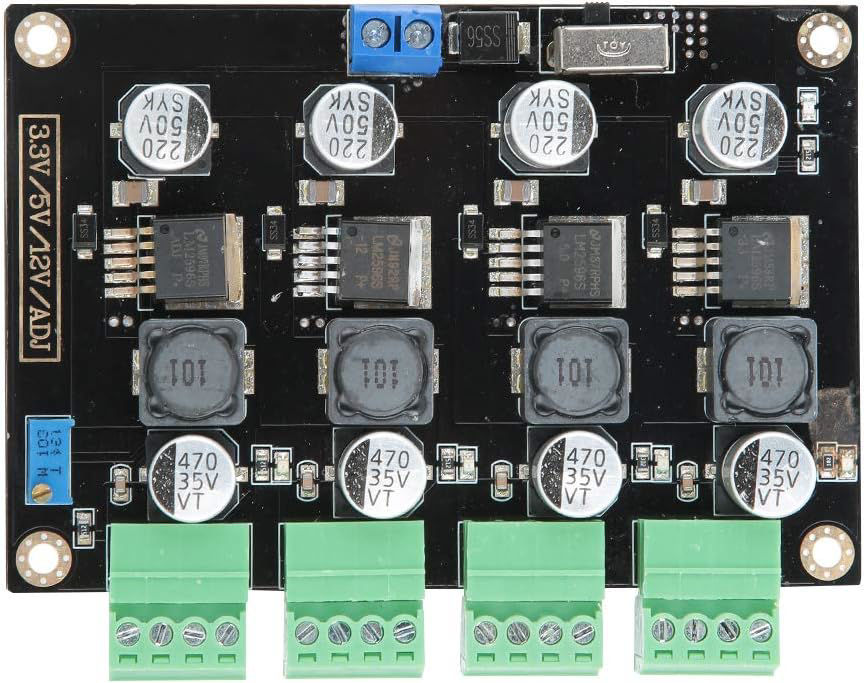
 Design with Adjustable Voltage Output Buck Converter Multi-Channel Switching Power Supply Module in Cirkit Designer
Design with Adjustable Voltage Output Buck Converter Multi-Channel Switching Power Supply Module in Cirkit DesignerIntroduction
The Adjustable Voltage Output Buck Converter Multi-Channel Switching Power Supply Module by Estink is a versatile and efficient power supply module designed to step down a higher input voltage to a lower, adjustable output voltage. This module supports multiple output channels, making it ideal for powering various devices and circuits simultaneously. Its compact design and high efficiency make it suitable for a wide range of applications, including DIY electronics projects, embedded systems, robotics, and industrial automation.
Explore Projects Built with Adjustable Voltage Output Buck Converter Multi-Channel Switching Power Supply Module
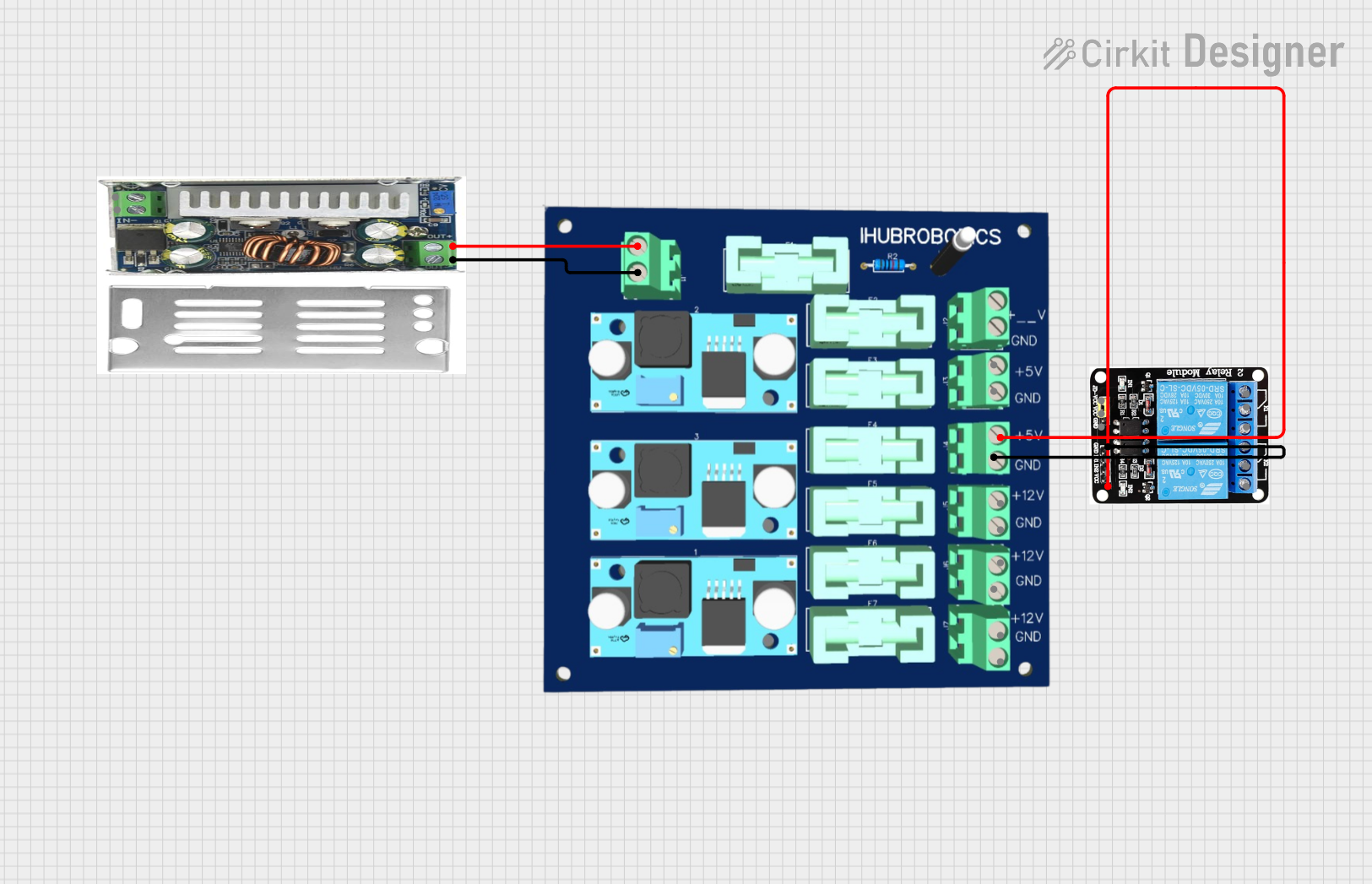
 Open Project in Cirkit Designer
Open Project in Cirkit Designer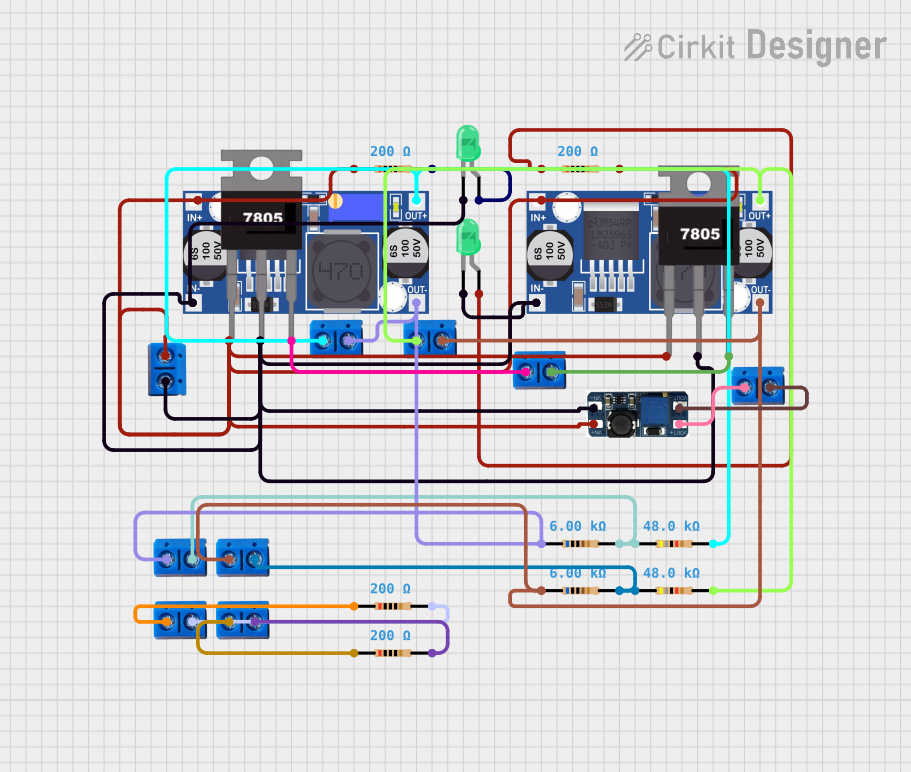
 Open Project in Cirkit Designer
Open Project in Cirkit Designer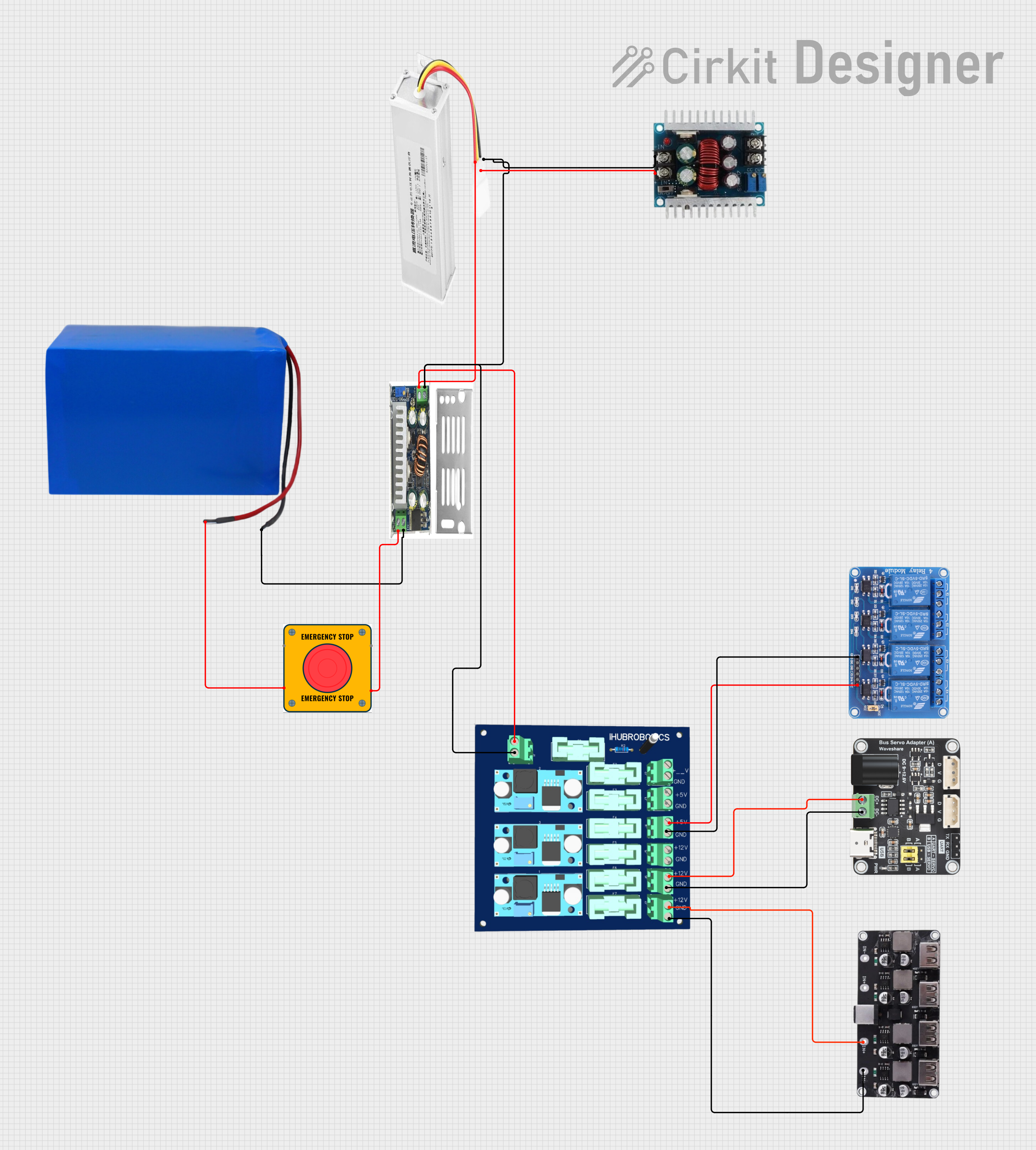
 Open Project in Cirkit Designer
Open Project in Cirkit Designer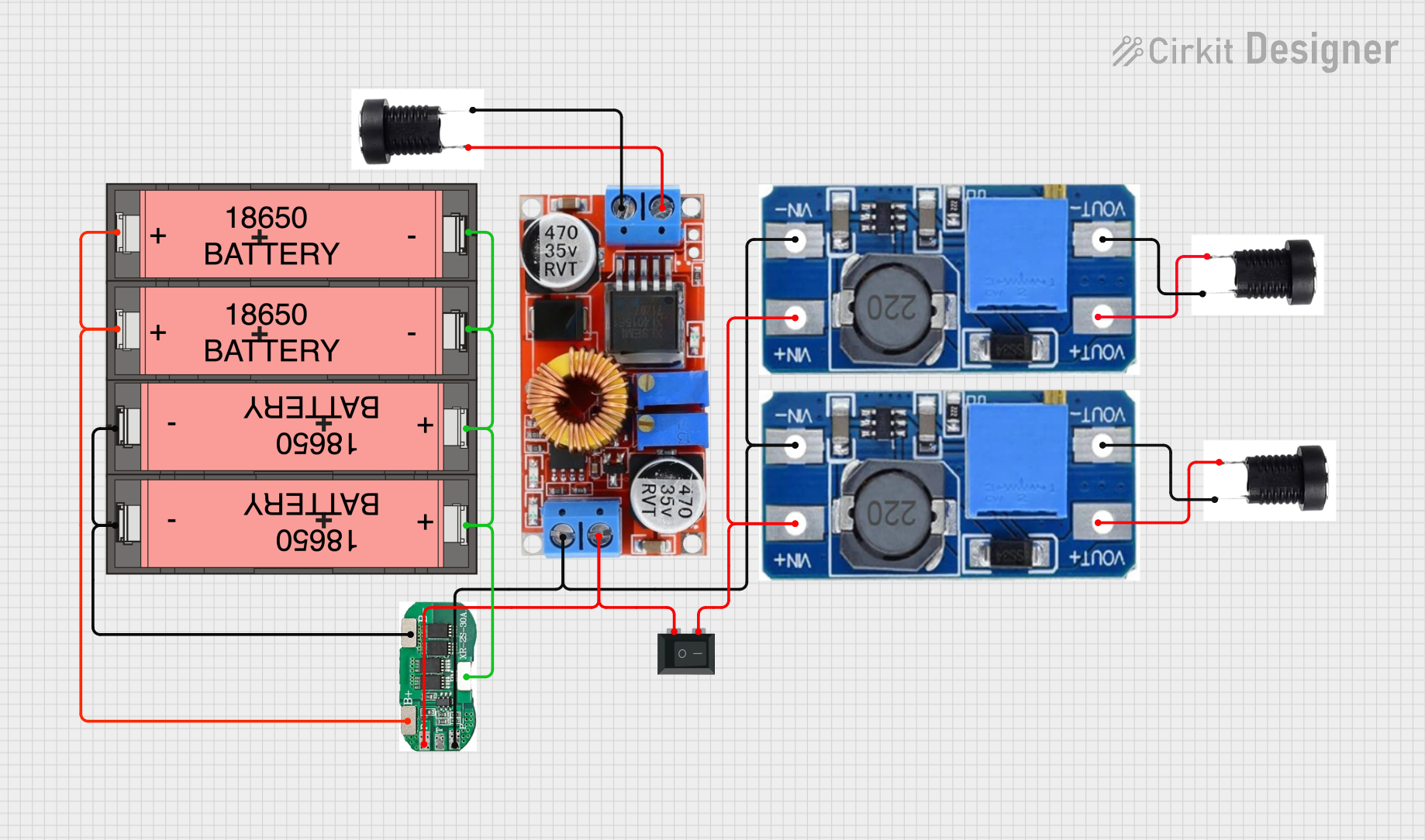
 Open Project in Cirkit Designer
Open Project in Cirkit DesignerExplore Projects Built with Adjustable Voltage Output Buck Converter Multi-Channel Switching Power Supply Module

 Open Project in Cirkit Designer
Open Project in Cirkit Designer
 Open Project in Cirkit Designer
Open Project in Cirkit Designer
 Open Project in Cirkit Designer
Open Project in Cirkit Designer
 Open Project in Cirkit Designer
Open Project in Cirkit DesignerCommon Applications and Use Cases
- Powering microcontrollers (e.g., Arduino, Raspberry Pi) and sensors
- Supplying power to LED strips and displays
- Battery-powered systems requiring regulated voltage
- Multi-channel power distribution in embedded systems
- Prototyping and testing circuits with different voltage requirements
Technical Specifications
Below are the key technical details of the Estink Adjustable Voltage Output Buck Converter:
| Parameter | Specification |
|---|---|
| Input Voltage Range | 6V to 40V DC |
| Output Voltage Range | 1.25V to 36V DC (adjustable) |
| Output Channels | 2 or more (varies by model) |
| Maximum Output Current | 3A per channel (with proper heat dissipation) |
| Efficiency | Up to 92% |
| Switching Frequency | 150 kHz |
| Operating Temperature | -40°C to +85°C |
| Dimensions | 60mm x 40mm x 20mm |
Pin Configuration and Descriptions
The module typically features the following input and output connections:
| Pin/Terminal | Label | Description |
|---|---|---|
| VIN+ | Input + | Positive input voltage terminal (6V to 40V DC) |
| VIN- | Input - | Negative input voltage terminal (ground) |
| VOUT1+ | Output 1+ | Positive output voltage terminal for Channel 1 |
| VOUT1- | Output 1- | Negative output voltage terminal for Channel 1 |
| VOUT2+ | Output 2+ | Positive output voltage terminal for Channel 2 |
| VOUT2- | Output 2- | Negative output voltage terminal for Channel 2 |
| ADJ | Adjust | Potentiometer to adjust output voltage |
Usage Instructions
How to Use the Module in a Circuit
Connect the Input Voltage:
- Connect the positive terminal of your power source to the
VIN+pin. - Connect the negative terminal of your power source to the
VIN-pin. - Ensure the input voltage is within the specified range (6V to 40V DC).
- Connect the positive terminal of your power source to the
Adjust the Output Voltage:
- Use the onboard potentiometer labeled
ADJto set the desired output voltage. - Turn the potentiometer clockwise to increase the voltage and counterclockwise to decrease it.
- Use a multimeter to measure the output voltage at the
VOUT+andVOUT-terminals for precise adjustment.
- Use the onboard potentiometer labeled
Connect the Load:
- Connect your load (e.g., microcontroller, LED strip) to the appropriate output channel (
VOUT1+/VOUT1-orVOUT2+/VOUT2-). - Ensure the load does not exceed the maximum current rating of 3A per channel.
- Connect your load (e.g., microcontroller, LED strip) to the appropriate output channel (
Power On:
- Turn on the power source and verify the output voltage and current using a multimeter.
Important Considerations and Best Practices
- Heat Dissipation: If the module operates at high currents (close to 3A), ensure proper heat dissipation by attaching a heatsink or providing adequate airflow.
- Input Voltage: Always ensure the input voltage is higher than the desired output voltage by at least 1.5V for stable operation.
- Short Circuit Protection: While the module may have basic protection, avoid shorting the output terminals to prevent damage.
- Multi-Channel Usage: When using multiple channels, ensure the total current draw does not exceed the module's thermal limits.
Example: Using with an Arduino UNO
To power an Arduino UNO with a 5V regulated output from the module:
- Set the input voltage to 12V DC.
- Adjust the output voltage to 5V using the potentiometer.
- Connect the
VOUT1+terminal to the Arduino's5Vpin and theVOUT1-terminal to theGNDpin.
Here is a simple Arduino code to blink an LED, powered by the module:
// Blink an LED connected to pin 13
void setup() {
pinMode(13, OUTPUT); // Set pin 13 as an output
}
void loop() {
digitalWrite(13, HIGH); // Turn the LED on
delay(1000); // Wait for 1 second
digitalWrite(13, LOW); // Turn the LED off
delay(1000); // Wait for 1 second
}
Troubleshooting and FAQs
Common Issues and Solutions
No Output Voltage:
- Cause: Input voltage is not connected or is below the minimum required level.
- Solution: Verify the input voltage is within the 6V to 40V range and properly connected.
Output Voltage is Unstable:
- Cause: Load current exceeds the module's capacity or input voltage is insufficient.
- Solution: Reduce the load current or increase the input voltage.
Module Overheats:
- Cause: High current draw without proper heat dissipation.
- Solution: Attach a heatsink or improve airflow around the module.
Cannot Adjust Output Voltage:
- Cause: Potentiometer is damaged or incorrectly adjusted.
- Solution: Check the potentiometer for damage and adjust it carefully.
FAQs
Q: Can I use this module to charge a battery?
A: Yes, but ensure the output voltage is set to the appropriate charging voltage for the battery type, and use a current-limiting circuit if necessary.
Q: Can I use both output channels simultaneously?
A: Yes, but ensure the total current draw does not exceed the module's thermal and electrical limits.
Q: Is the module protected against reverse polarity?
A: No, the module does not have built-in reverse polarity protection. Always double-check your connections before powering on.
Q: Can I use this module with an AC power source?
A: No, the module requires a DC input voltage. Use an AC-to-DC adapter if necessary.
This concludes the documentation for the Adjustable Voltage Output Buck Converter Multi-Channel Switching Power Supply Module by Estink.